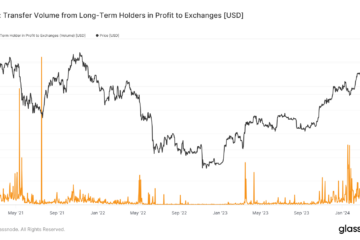
The Solana blockchain faced severe congestion over the weekend as interest in Donald Trump and Melania Trump-themed memecoins surged.
This unexpected spike overwhelmed the network, causing delays and failed transactions across various platforms.
Solana congestion
Prominent Solana-based services, including Phantom, Jito, and Jupiter, alongside centralized exchanges such as Coinbase and Binance, struggled to cope with the heightened demand.
On Jan. 19, Phantom, a leading wallet provider on Solana, confirmed the strain on its infrastructure. The platform reported handling over 8 million requests per minute, which exceeded its capacity and led to transaction failures.
Phantom assured users that efforts were underway to stabilize operations while encouraging patience during the recovery process.
In a separate update, the platform highlighted significant user engagement, with over $1.25 billion in trading volume and 10 million transactions completed during the past day.
Similarly, Jito, a liquid staking solution provider on the blockchain network, said its “Block Engine API [experienced] severe degradation due to unprecedented load levels.”
The team added:
“While the Solana network continues to operate and process blocks, transaction submission through our service remains impacted.”
Moreover, centralized exchanges were not immune to the impact. Coinbase CEO Brian Armstrong highlighted the strain on their Solana infrastructure, noting that the team was working to scale operations to handle the unexpected demand.
Armstrong said:
“Team is working hard on scaling our Solana infra now – lots of Solana activity last few days, we were not anticipating this level of surge.”
Binance has also had issues with USDC withdrawals on Solana.
Root causes
Mert Mumtaz, CEO of Helius Labs, provided insights into the technical difficulties faced by the Solana network.
He noted that while block production remained active, incomplete transactions were common due to a mix of factors:
- High volatility in memecoin prices led to low slippage settings, increasing the likelihood of transaction failures.
- The overuse of Compute Units (CUs) by some applications resulted in inefficient block packing and elevated transaction fees.
- Inconsistencies in fee APIs created chaotic auction environments, compounding the problem.
- Software bugs in the Agave client left a significant portion of its capacity unused, further straining the system.
Mumtaz described the situation as a critical learning experience, emphasizing the importance of addressing bottlenecks and improving scalability for future demand surges.
He highlighted Solana’s progress, noting that similar demand spikes in earlier years could have entirely halted block production.
Mumtaz added:
“A large number of these problems are preventable, but sometimes require massive demand events like this weekend to force teams to actually integrate (fee APIs are a big example of this).”
 Bitcoin
Bitcoin  Ethereum
Ethereum  Tether
Tether  XRP
XRP  USDC
USDC  Solana
Solana  TRON
TRON  Lido Staked Ether
Lido Staked Ether  Dogecoin
Dogecoin  Figure Heloc
Figure Heloc  Cardano
Cardano  WhiteBIT Coin
WhiteBIT Coin  Bitcoin Cash
Bitcoin Cash  Wrapped stETH
Wrapped stETH  Wrapped Bitcoin
Wrapped Bitcoin  USDS
USDS  Wrapped eETH
Wrapped eETH  Binance Bridged USDT (BNB Smart Chain)
Binance Bridged USDT (BNB Smart Chain)  Chainlink
Chainlink  Monero
Monero  LEO Token
LEO Token  WETH
WETH  Zcash
Zcash  Stellar
Stellar  Ethena USDe
Ethena USDe  Coinbase Wrapped BTC
Coinbase Wrapped BTC  Hyperliquid
Hyperliquid  Litecoin
Litecoin  Sui
Sui  Avalanche
Avalanche  Hedera
Hedera  sUSDS
sUSDS  Shiba Inu
Shiba Inu  USDT0
USDT0  Dai
Dai  Canton
Canton  PayPal USD
PayPal USD  Uniswap
Uniswap  Mantle
Mantle  Cronos
Cronos  World Liberty Financial
World Liberty Financial  Toncoin
Toncoin  Ethena Staked USDe
Ethena Staked USDe  Polkadot
Polkadot  USD1
USD1  Aave
Aave  Rain
Rain  Bitget Token
Bitget Token 


